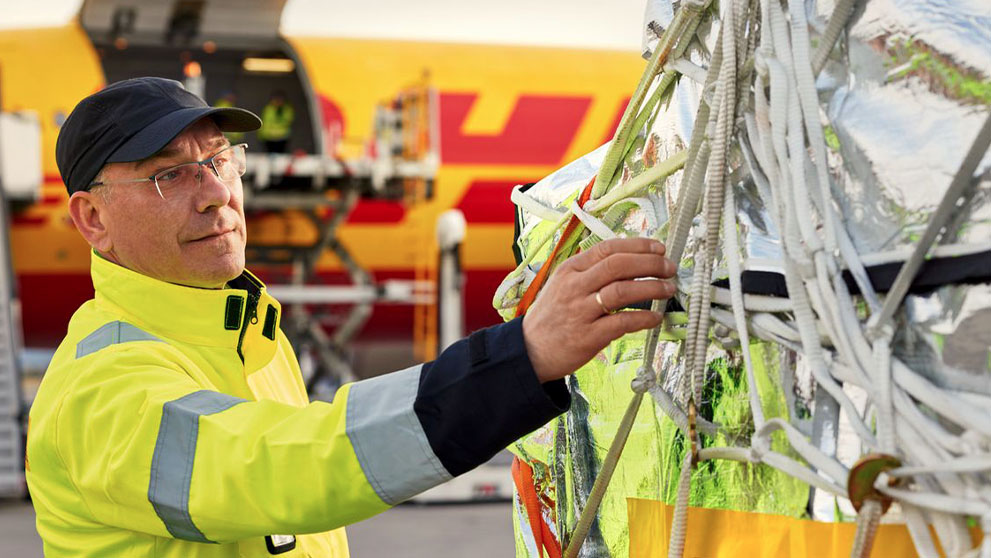Common mistakes e-Commerce businesses make with international shipping

International shipping is an area where e-commerce mistakes are often made – while delivery issues are one of the main ways customer satisfaction can be damaged. Here we explore the most frequent, often costly, e-commerce errors in shipping cross-border, and how to avoid them.
Why is it important to streamline shipping?
Shipping errors can compromise customer satisfaction; a slow or inaccurate delivery risks damaging their perception of your brand.
As well as improving delivery times and increasing customer satisfaction, optimizing and streamlining shipping can also enhance cost-efficiency and your business’s overall operational performance.
If you’re at the very early stages of selling abroad, it’s also worth taking a look at our guide to the basics of how to start shipping internationally.
Common e-commerce business mistakes when shipping
Now let’s explore those shipping-related e-commerce mistakes in detail, including some advice on how to avoid them.
 Inadequate shipping research
Inadequate shipping research
Many e-commerce business owners don’t do enough shipping research upfront – and find themselves paying for it with unexpected delays and other nasty surprises.
There’s a lot to consider when shipping internationally. Failing to adhere to customs regulations or filling in documentation incorrectly risks your shipment being held up at borders. And to make things even more complicated, regulations differ between countries, so the process can be particularly time-consuming if you’re shipping to multiple markets.
Inaccurate shipping cost estimates
Shipping costs have risen recently, driven up by factors such as fuel prices, labor costs and port congestion. This has led to businesses frequently underestimating them.
This is why calculating your Landed Cost is important. It’s essentially all the costs associated with getting your products to their destination country – including freight fees, duties and taxes.
 Neglecting shipping documentation
Neglecting shipping documentation
If you don’t have the correct shipping documents, there is a high chance your shipments will be delayed and your customers left disappointed – as many e-commerce businesses have discovered to their cost.
The Commercial Invoice is the key shipping document that always accompanies a shipment. It gives the customs authorities the information they need to assess if the goods can move in or out of the country, and whether any controls are needed. It also helps them decide duties and taxes. Key points to include on your Commercial Invoice include the HS code, an accurate goods description, the country of origin and the value.
A top tip: if you use a template to create your own document, always name it as a Commercial Invoice rather than a Proforma Invoice. Some countries will instantly reject it if it’s not actually called a Commercial Invoice!
Other documents you may need to include: a Bill of Lading, an Air Waybill, a Certificate of Origin, Export and Import Licenses, an Export Packing List and an Insurance Certificate. For more detail on these, see our guide to paperwork for international shipping.
Something to bear in mind for the future: increasingly, countries are moving away from paper customs documents in favor of digitalized versions. For example, the UK recently sent the first ever fully digitalized goods shipment1 from Burnley to Singapore.
Inefficient shipping packaging
Another e-commerce mistake to avoid is inappropriate packaging. Oversized packaging – bad practice on sustainability grounds – also won’t secure the items inside properly. The result? The goods are damaged when delivered. Not surprisingly, the recipient asks the retailer for solutions – which eat into their bottom line.
To avoid this situation, ensure your products are shipped in the right sized packaging and packed safely and securely. And just in case, always take out shipping insurance. This will cover you if ever your goods are lost in transit, too.
 Unawareness of shipping restrictions
Unawareness of shipping restrictions
As mentioned in our section on shipping research, all too often e-commerce businesses don’t investigate the shipping and trade guidelines for the countries they are shipping from and to, resulting in their goods being returned to them.
Finding these guidelines and shipping restrictions isn’t difficult either. Just search online for the country names and import and export regulations. You’ll usually be shown results including those from the respective government trade departments – which are, of course, the most reliable sources for this type of information.
Offering limited shipping options
Retailers who don’t meet customer expectations on shipping pay the price: the customer often shops elsewhere. And remember, not all customers have the same priorities.
Offering flexible shipping is the answer, and that’s where On Demand Delivery is your secret weapon. This service allows online customers to choose exactly when and where their orders are delivered. For example, they may choose to have their package sent to a parcel locker or left with a neighbor if they know they aren’t going to be in (which reduces your failed delivery rate, too!) Furthermore, they’ll receive regular notifications about their shipment’s status, so they can track where it is. In short, ODD gives your customers a convenient experience, meaning they’re more likely to shop with your business again.
Poor tracking and communication
Most customers now expect to be able to track their orders – and most international shipping companies offer a tracking system. So retailers who don’t offer this service are making a big e-commerce mistake. Of course, the trick is to choose a shipping company with a reliable tracking system!
When a parcel goes missing or is delayed, it’s frustrating for customers and can affect their satisfaction and loyalty, as well as your business’s reputation. Yet not communicating with the customer in this situation is another common e-commerce error. It’s much better to be proactive. As soon as you know there is a potential delay to a shipment, get in touch to warn the customer in advance. You can use any of the usual channels.
If the delay is unexpected and the customer contacts you to complain, apologize for the problem and show some empathy. You might also consider offering a solution to improve the situation: a discount on a future purchase, for example, or if the parcel is lost, a refund. Even then, communication is key: keep in touch with the customer until the issue is completely resolved.
 Ignoring return and refund policies
Ignoring return and refund policies
When you’re selling internationally, a thorough returns policy is important – and it needs to be displayed clearly on your website too. Not doing so is another e-commerce mistake which can prevent customers in other countries from buying from you.
A good returns and refunds policy builds customers’ trust. After all, as you’re selling in another country, your brand may not have a widespread reputation and foreign customers may initially be worried about not being able to return an item. Your policy can put their minds at rest and give them the confidence to shop with you. In fact, 67% of customers2 check the returns policy before making a purchase online. So they can even help maximize your sales.
Currency and payment issues
It’s a big ask of your foreign customers to pay for goods in your currency rather than their own local currency. So don’t make that basic e-commerce error – leave that to your competitors!
Having to pay in a foreign currency can instantly put off customers. For a start, it makes it much harder for them to compare prices. And it means they will have to pay foreign transaction fees, on top of your prices. That’s an instant double negative, which means they are far more likely to switch and shop elsewhere. In fact, 13% of online shoppers will abandon their shopping cart if they see prices shown in a foreign currency3.
And even if they do proceed to buy, confusion over prices can result in them disputing credit card payments afterwards and claiming chargebacks, which can hurt both your cashflow and your reputation.
Accepting your international customers’ local currency, and making that clear on your website, will put them at ease and make them far more likely to buy from you. So long as the shipping itself goes without a hitch, you can expect loyal customers – and to get an edge over your competitors who don’t accept foreign currency.
 Lack of shipping customer service
Lack of shipping customer service
No matter how well you streamline your shipping, and even if it delivers perfectly 99% of the time, occasionally something unavoidable will go wrong. Unfortunately, some e-commerce business owners make the mistake of being unprepared for the problem, by providing inadequate shipping customer service.
It’s vital that you have proper customer support in place to deal with international customers’ inquiries, concerns and issues promptly. Otherwise, a mishap that’s beyond your control can cost you the customers you’ve worked so hard to attract.
And don’t forget the potential language barrier either! If you’re selling cross-border, engage an experienced shipping partner who is used to dealing with international customers and can provide the support needed, in their local language.
Not considering sustainability
Climate change is on all our minds these days, and many people have made big changes to their own behavior to be more sustainable. They expect this from the businesses they engage with, too. So, it would be a huge e-commerce error not to offer green delivery options. Also, it makes good marketing sense to partner with a logistics company that’s ahead of the game in its own sustainability commitments.
DHL has an ambitious goal to reduce all logistics-related emissions to zero by the year 2050. As such, it is dedicated to helping customers find new and innovative sustainable solutions for their deliveries. With GoGreen Plus, for example, businesses can reduce the carbon emissions associated with their shipments through the use of Sustainable Aviation Fuel. This biofuel is produced from renewable sources such as vegetable oils, animal fats, waste products, and agricultural crops. SAF is specifically designed to be used as a substitute for traditional jet fuel and can reduce greenhouse gas emissions by up to 80% compared to fossil fuels.
How our e-commerce shipping services can help
International shipping may seem complex, but it doesn’t have to be! Partnering with a logistics leader with a global network will help your business find and reach new markets effortlessly.
For example, in MyDHL+ you can calculate shipping costs, duties and taxes to help you think through your pricing strategy and providing your customers with transparency about shipping costs will only build trust in your business.
If you need more information about the import restrictions of the delivery recipient's country, contact our customer service department by phone 8 (800) 7000-345 or in any messenger convenient for you on the main page of our website.
You can also check out Discover’s Export Guides for all the local insights that will help you engage and attract cross-border customers.
Start your partnership with the world’s most international company to reach new markets, seamlessly.
REFERENCES
3 Statista


